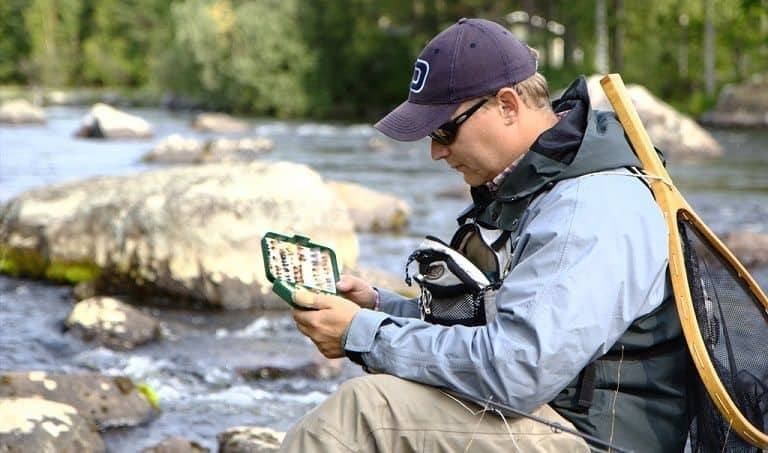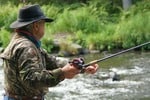How to Choose the Right Fly Patterns
It’s going to be pretty hard to catch a fish without some flies. You can think of flies as patterns. The pattern is the collection of materials and techniques used for creating a particular fly. There are literally thousands of fly patterns and probably 10’s of thousands of variations available these days. You’ll need to boil this down to a basic collection that will work in many different situations.
We suggest starting with a basic kit that includes a small selection of wet flies, dry flies, and streamers. These patterns are proven winners and will get you in the game right away. It’s important to take the guess work out of trying to select the right fly when you are beginner. Stacking your box with known and proven flies is a good way to do this. The easiest way to get started with collecting your flies is with a pre-assembled kit.
You’ll be able to more specifically tailor your selection to the fish you are targeting and the specific fisheries by assembling your own selection. You’ll first need a fly box. Select a medium sized box that will allow you to stack one side with dry flies and one side with wet flies. A selection of 2 to 3 dozen is plenty to get you started for your first day.
Flies can be broken down into many categories and sub-categories. As a beginner it helps to look at most flies as falling into two groups. Those that are searching flies and others that are imitative flies. Searching flies are patterns that can imitate a wide range of insects. Imitative patterns are those that are designed to specifically imitate one particular life cycle stage, for one particular species of insects.
Searching flies are a beginners best friend.
Here’s a beginner’s list of must have searching flies.
Dry Flies
- Parachute Adams
- Royal Wulff
- Elk Hair Caddis
- Stimulator
- Dave’s Hopper
- Chernobyl Ant
Wet Flies
- Prince Nymph
- Hare’s Ear Nymph
- Copper John
- Pheasant Tail Nymph
- Kaufmann’s Stonefly Nymph
- Partridge and Orange
Terrestrials
- Dave’s Hopper
- Chernobyl Ant
- Black Ant
Streamers
- Wooly Bugger
- Muddler Minnow
More than anything selecting flies is about having confidence. If you’re continuing to struggle with having confidence about the flies you are selecting than your fishing is going to suffer. These patterns have stood the test of time. You should feel confident using any one of them at any time for a decent shot of catching a fish
Dry Flies
Seeing a fish rise to the surface, and eat a floating fly is one of the most exciting moments any angler can experience. When you’re a newbie, it’s important to start fishing dry flies and a floating line as much as possible. You’ll learn how to fool fish on the surface, and sharpen your reaction time. Learning to fly fish with floating lines will quickly teach you how to control the line once it’s on the water. Re positioning your line on the water either upstream or downstream is mending. Mending is a crucial skill to learn, and is important with all techniques of fly fishing, whether you are using dries, nymphs, or streamers.
Nymphs
Once you have some basic skills as a dry fly angler it’s time to start working with your nymphs. Nymphs are flies that imitate the immature life cycle of aquatic insects. While every species of insect are a little bit different, nymphs live on the bottom of rivers and lakes. The amount of time they spend in this immature stage grossly outweighs the amount of time they live as adults. While the adult form of an insect may live for only 12 to 24 hours, a nymph may live on the bottom for 1 or 2 years. Fish are actively seeing nymphs every day while the adult insects will typically only hatch during a specific time of year, and during a particular window during the day. When all else fails, you’ll be able to get yourself in the game by fishing nymph patterns.
Streamers
The Wooly Bugger is perhaps the most famous and effective fly pattern ever devised. It is likely responsible for more fish caught that any other fly in the history of fly fishing. Why is this the case? I don’t believe anyone can say for sure, but it is likely because it sort of looks like anything a fish might want to eat. All you need to know is that if you tie on a Wooly Bugger, or any of it’s thousands of variations, you have a better than average chance at hooking a fish. The Wooly Bugger is a Streamer fly. You’ll select a streamer pattern when you want to imitate other fish, or just want to toss something out there that looks good to eat. Streamers can be a good way to trigger a response. Sometimes even when a fish is not particularly interested in eating anything, a streamer cruising by it’s snout can just be too irresistible to pass up. Often, because a big streamer represents such a big meal, they’ll hurl themselves to get at your fly.
Terrestrials
It’s a hot, slightly blustery day in mid August. You’re heading out for an evening fishing session, and on your way to the river you notice three or four big grasshoppers jumping out of the way of your foot steps. You’d better make a note of it, because the fish definitely have!
Terrestrials are insects born from the ground. Grasshoppers and ants are some of fish’s most favorite foods. Hopper patterns are typically fished on the surface. Twitching them, gently skating them, or slapping them down on the surface of the water are favorite techniques. Ants are also a favorite variety of terrestrials for feeding fish. They are often over looked and usually harbor a very little corner in most fly boxes, but these little guys can produce some big results. Try them in the summer and fall when you’re at a loss for what to tie on.



